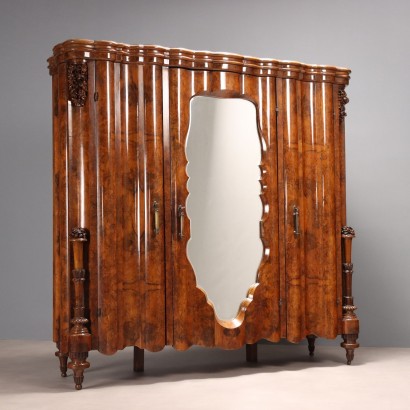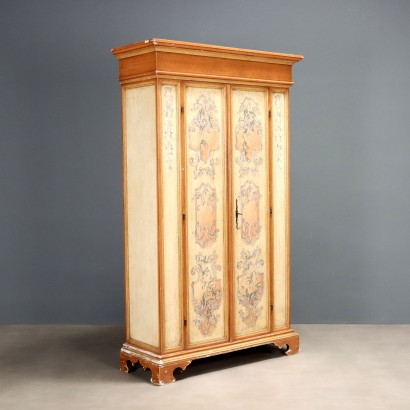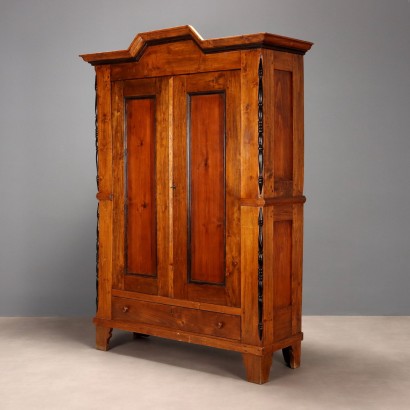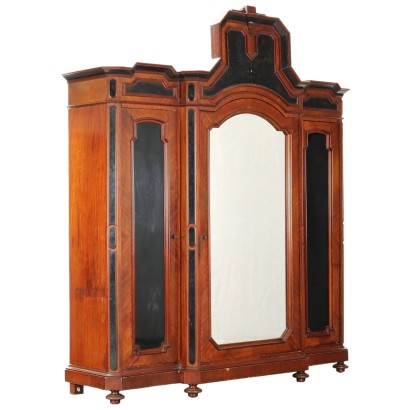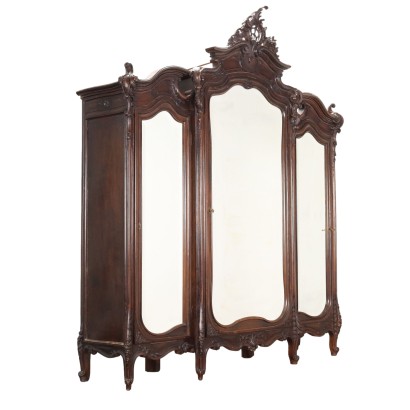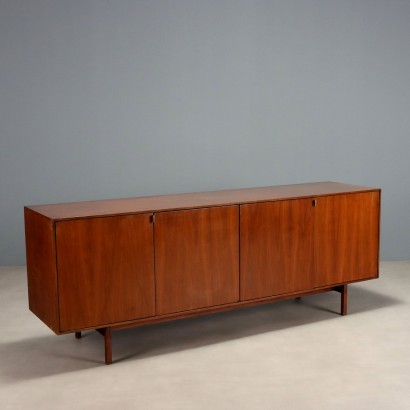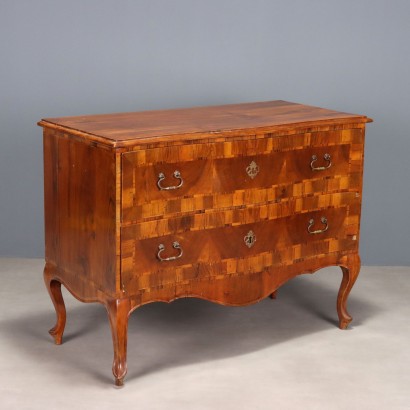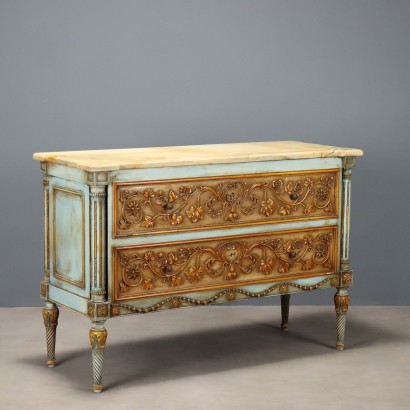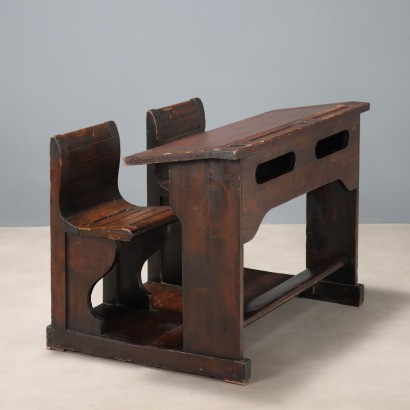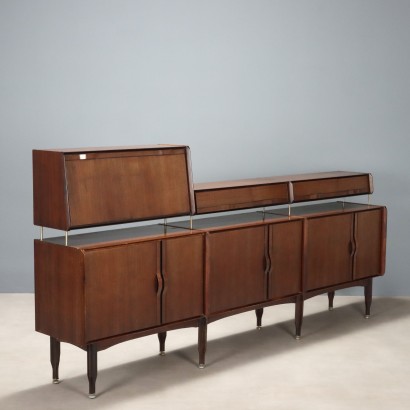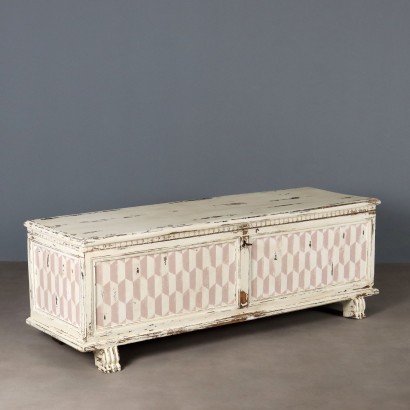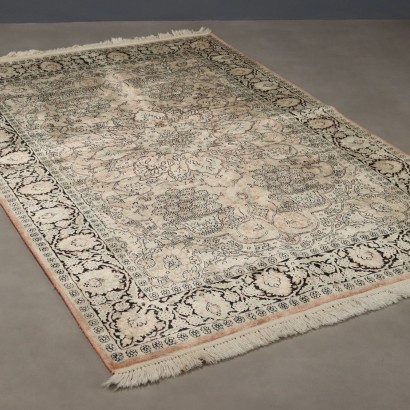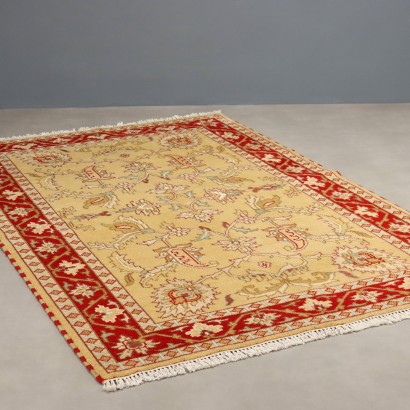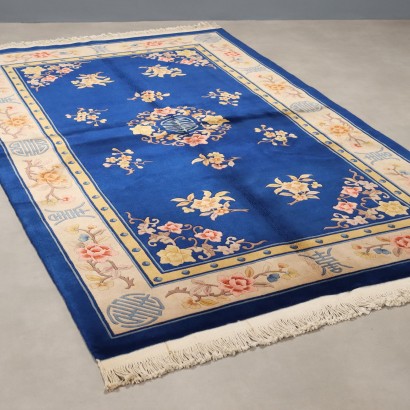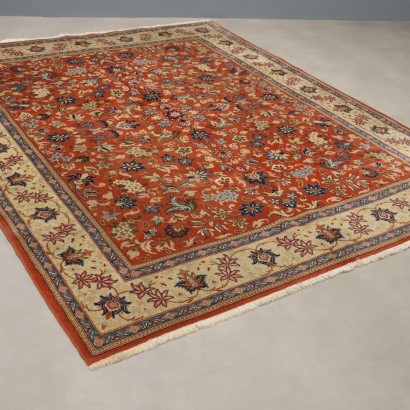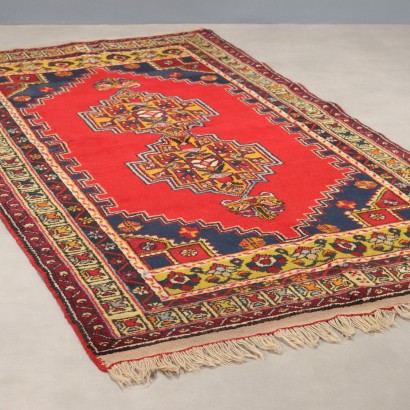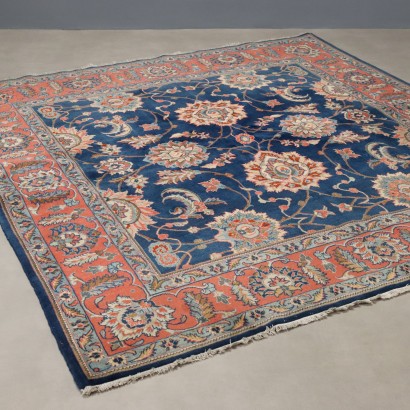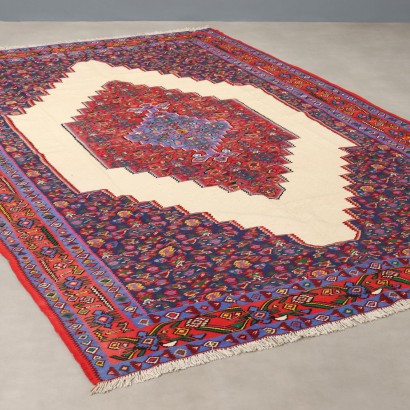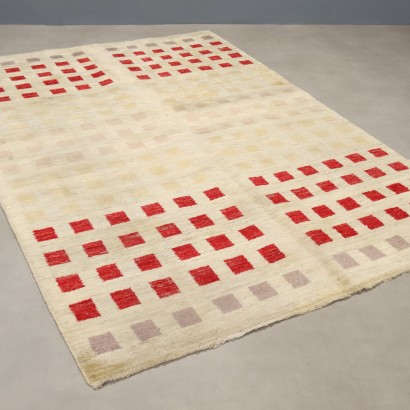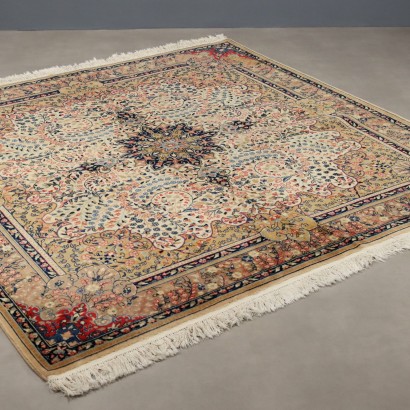Antique Wardrobe Art Deco Walnut Walnut Burl 3 Doors XIX Century - Italy, Early XIX Century
Features
Italy, Early XIX Century
Style: Art Déco (1920-1950)
Age: 20th Century / 1901 - 2000
Origin: Italy
Main essence: Walnut
Material: Walnut Burl Veneer
Description
Art Deco wardrobe in walnut and walnut burl, split front with three doors, the central one featuring a beveled mirror. The legs and uprights are turned and carved with floral and leaf motifs, as are the pilaster strips. The interior is veneered in mahogany, with shelves on the sides and drawers in the center. Italy, first half of the 19th century.
Product Condition:
This item requires restoration and polishing due to age and wear. We strive to present the actual condition of the piece as accurately as possible with the photos. If any details are unclear from the photos, the description will prevail.
Dimensions (cm):
Height: 221,5
Width: 227
Depth: 67
Additional Information
Style: Art Déco (1920-1950)
The name Art Déco is due to the exhibition held in Paris in 1925, which was called the International Exhibition of Modern Decorative Arts and was the successor of the Liberty style.nArt Déco is a stylistic historical period formed after the Liberty floral period, shortly after the end of the First World War.nThere was an almost radical change anticipated by the growth of the Precisionist movement and that of Cubism (in art), the Art-Decò furnishings were characterized by decidedly more rigid lines and the presence of geometric figures, definitively abandoning the sinuous and wavy lines , of objects and furnishings, from the previous Liberty period.nIt asserted itself from the beginning of 1915 until the beginning of the 30s.nThis style was transversal and major exponents were created in the most diverse art forms, from urban architecture to painting, from sculpture to glass masters, from the production of objects such as furnishing accessories to jewellery.Age: 20th Century / 1901 - 2000
20th Century / 1901 - 2000Main essence: Walnut
Walnut wood comes from the plant whose botanical name is juglans regia , probably originally from the East but very common in Europe. Light or dark brown in color, it is a hard wood with a beautiful grain, widely used in antique furniture. It was the main essence in Italy throughout the Renaissance and later had a good diffusion in Europe, especially in England, until the advent of mahogany. It was used for solid wood furniture and sometimes carvings and inlays, its only big limitation is that it suffers a lot from woodworm. In France it was widely used more than anything else in the provinces. In the second half of the eighteenth century its use decreased significantly because mahogany and other exotic woods were preferred.Material: Walnut Burl Veneer
Other customers have searched:
Approfondimenti
Per saperne di più sugli armadi antichi, consulta i nostri approfondimenti:Semplicità e funzionalità dell'armadio lombardo tra '600 e '700
Gli arredi di antiquariato by FineArt
Uno stipo toscano tra XVI e XVII secolo
Sull'antiquariato in generale dai un'occhiata anche a
Classic Monday: da un pezzo dei nostri magazzini alla storia dell'antiquariato
L'antiquariato dalla A alla Z: il Dizionario dell'Antiquariato
Il dizionario dell'antiquariato - Lastronatura
Il dizionario dell'antiquariato - Mascherone
Il dizionario dell'antiquariato - Natura morta
Il dizionario dell'antiquariato - Opificio
Il dizionario dell'antiquariato - Pastiglia
Il dizionario dell'antiquariato - Savonarola
Il dizionario dell'antiquariato - Rosone
Intaglio barocco con motivo a ricciolo
Product availability
The product can be seen at Cambiago
Immediate availability
Ready for delivery within 2 working days from ordering the product.

